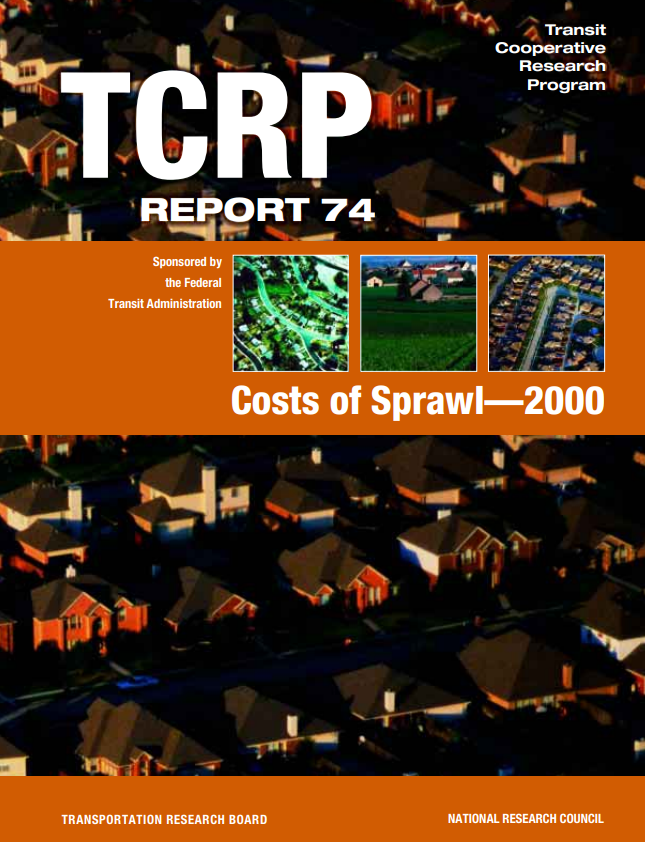Newspapers headline the proliferation of sprawl almost daily. What is sprawl? The preface to this landmark study defines it as spread-out development that consumes significant amounts of natural and man-made resources, including land and public works infrastructure of various types and low-density, leapfrog development that is characterized by unlimited outward extension. Can sprawl be controlled, or should it be? Are its consequences always negative?
TCRP Report 74 is the culmination of more than five years of Rutgers University research on urban sprawl in America. This comprehensive study, prepared for the Transportation Research Board, calculates the costs of sprawl over a 25-year future from 2000 to 2025 for the 3,091 counties in the United States. It projects the quantitative and qualitative costs of an uncontrolled growth future based on historical development patterns and compares that future to one that emphasizes more-contained development–smart for compact growth–over the same 25-year period.
The report sixteen chapters are divided into four parts: Setting the Scene (background and historical context of sprawl); The Impact of Sprawl on Resources (impacts on land, water and sewer, roads, public service costs, real estate development); The Personal Costs of Sprawl (impacts on individual travel costs–automobile and transit, quality of life, the livability of cities); and Dealing with Sprawl (both the benefits and the negative effects of sprawl).
The study findings are critical to public and private decision makers across the United States as they attempt to balance sensible land development with economic growth goals.
